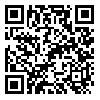Volume 12, Issue 46 (2015)
FSCT 2015, 12(46): 155-166 |
Back to browse issues page
Abstract: (4045 Views)
Yoghurt is one of the fermented dairy products with high nutritional value and short shelf life where its shelf-life can be prolonged by drying. Therefore, in the present study, the fresh yoghurt with different amounts of dry matter (10, 20 and 28% w/w) was dehydrated by microwave–vacuum dryer at different levels of microwave powers (35, 135, and 260 W) and definite absolute pressure (125± 5 mbar). Then, the effects of type (gum tragacanth, guar gum, locust bean gum, Persian gum, and casein powder), quantity (0.25, 0.5, 0.75 and 1% w/w) in singular and combined forms (tragacanth:guar, Tragacanth:locust been gum, and guar: locust been gum), combination ratio (80:20, 50:50),and adding stage (pre/post drying) of hydroclloids over sensory and rheological properties of instant yoghurt were evaluated. Results showed that higher microwave powers and dry matter percent led to the shorter and higher drying rate, respectively. Regarding rheological properties, the storage modulus was significantly higher than loss modulus (G'>G'') and elastic behavior was observed in majority of samples. However, sample with Guar:locust bean gums showed inverse features, also Complex viscosity and loss tangent of most samples (pre drying method) were similar to control, except one with guar: locust been gum. Furthermore, the most accepted reconstituted yoghurt was one containing gum tragacanth, and baking powder followed by one with 0.6% tragacanth:locust bean gum (80:20, 0.6%) which were prepared with pre-drying method. Moreover, it was found that the adding stage of hydrocolloids had significant effect on the evaluated properties of instant yoghurt where pre-drying method was recognized as the most appropriate one.
Received: 2012/05/23 | Accepted: 2013/01/22 | Published: 2014/06/1
| Rights and permissions | |
 |
This work is licensed under a Creative Commons Attribution-NonCommercial 4.0 International License. |
